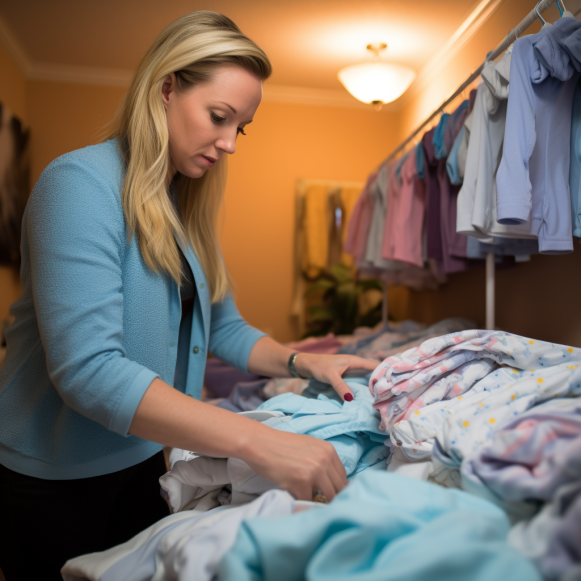An entrepreneur who bought a tennis center for $40,000 in 2010 has done seven-figures in revenue in 2023 after barely surviving the pandemic. He shares 3 keys to running a successful small business.

Our investing experts respond to readers’ questions and write unbiased product reviews (here’s how we evaluate investing products). Paid non-client promotion: We may receive a commission from our partners in some cases. Our thoughts are always our own.
- Jon Neeter, a small business owner since 2010, has seen the highs and lows of entrepreneurship.
- He shared strategies that have kept him in business for years, including being willing to pivot.
- It’s also important to offer a consistently excellent product.
Jon Neeter and his business partner purchased a tennis center in Santa Monica, California, in 2010.
They leased the property — a single tennis court with a 330-square-foot pro shop — and bought the company.
At the time, the business consisted of “basically a ball machine, two ball carts, four ball tubes, and no client list whatsoever,” according to Neeter, a former collegiate tennis player and coach. He said they negotiated the price down to $40,000 and paid for it with their own money.
Neeter ran a lean, profitable business between 2010 and 2019. Because he could have multiple clients on-court at the same time, his main revenue streams were group clinics and classes. In 2015, he also started doing retail and offered private lessons.
“We were always cash positive, even if it wasn’t by much,” he said, noting that revenue is directly affected by factors beyond his control, such as bad weather. Because he has only one outdoor court, “a bad rainy year could really mess things up.”
The second half of 2019 was a particularly difficult period for small business owners. A heavy rainstorm in southern California not only closed the court but also destroyed the roof of the pro shop. The combination of losing business and raising funds for a new roof made it “the most challenging, stressful year of my life,” according to Neeter.
“All of a sudden it was like, okay, now we can breathe,” Neeter said after reopening the shop in the fall of 2019. “And then, 2020.”
For months after the coronavirus pandemic, there was no revenue. “It wouldn’t have worked otherwise,” he says of his business’s survival thanks to an Economic Injury Disaster Loan (EIDL).
Tennis became more popular after Covid because it is a socially isolated sport, he claims. But it took time to rebuild, especially because his bread and butter, group classes, couldn’t resume right away: “We were running in the red for a while.”
In 2023, Neeter has already doubled his best year’s revenue, “and there’s still the holiday season to go with retail,” he adds. Insider examined his profit and loss statements from the previous five years to confirm his phenomenal revenue growth. He’s already made well over a million dollars in sales between retail and on-court services like lessons and clinics by 2023.
What is the game changer? Pickleball is a racket sport played on a smaller court using a smaller paddle and a wiffleball.
To capitalize on the pickleball boom in America, Neeter transformed his single court into four pickleball courts and expanded his pro shop from 330 square feet to nearly 2,000 square feet. After about nine months of running a tennis-pickleball hybrid shop, he officially rebranded to the Santa Monica Pickleball Center in August 2023. He still teaches tennis in public parks, but pickleball is his main source of income.
“A rebirth at a time when I thought it was a death,” Neeter said of the company. He shared three strategies and philosophies that have helped him stay in business for over a decade and reach seven-figure revenue figures.
1. Be willing and ready to pivot
Neeter’s pickleball pivot was not his first major business change.
In the beginning, he ran Court Strength, a high-performance tennis academy geared toward top-ranked junior players. It worked for a while, but it “was too niche to sustain long term,” he said.
Around 2015, he made the decision to focus on all-around programming and community-driven tennis. He renamed the company the Santa Monica Tennis Center and began offering more clinics for juniors and adults of all skill levels.
Between 2015 and 2019, “the business became really efficient,” he claims. “There were days where the court would be busy from 7 a.m. to 9 p.m. at night, and if there was a half-hour to an hour empty, it was a bad day.”
The next major turning point occurred after Covid, as pickleball began to gain popularity in the United States.
After running a tennis center for over a decade, introducing a new racket sport to his shop and court was a risk. “Do you alienate your customer base for the unknown?” he and other tennis facility owners were faced with, he said. That’s a difficult decision because you have a sure thing and are now taking a risk on potential?”
Neeter made the decision after witnessing firsthand how popular pickleball was becoming. A friend told him to meet him at Santa Monica’s Memorial Park, which had become a Southern California pickleball mecca. “There were like 200 people on four tennis courts,” he said. “On these four tennis courts, I couldn’t find him.” I’d never seen anything like it before and thought, ‘OK, I get it. This is significant.”
He went all-in once he decided to pivot. “Build the best pickleball shop in the country,” he said.
“Objectively, it was a risky call,” he added, “but I didn’t think it was that big of a risk.” Because I just sort of resolved myself to: It’ll work. We’ll make it work because it has to work.”
2. Employ qualified personnel
Neeter, like most entrepreneurs and small business owners, worked long hours in the beginning: “It was a lot of 10-, 11-hour days,” he said.
To give yourself some time back as an entrepreneur, you must hire good employees, which Neeter did. “Everything was on cruise control,” he said by 2015. “It got to the point where I didn’t have to do too much, I had really good people working the desk, we always had great staff, and that made my life very easy.”
He was able to offer flexible, part-time hours, which helped him retain great employees, especially in Los Angeles, where “everybody’s got three different side hustles,” he said. “‘Tennis pro’ is a great position for an aspiring actor or an aspiring writer, where they can have a schedule that is flexible and make good money for little windows and then do their other things.”
Neeter also created a work environment with “a special vibe,” he said. “It’s a cool place and the clients are great, so staff members often stay longer than they probably should.”
3. Offer a consistently excellent product
One of the difficulties in running a service-based small business is that “people get attached to the service providers themselves,” according to Neeter. Clients, for example, form bonds with their coaches, but coaches change.
“We did have occasions, especially early on, when a coach would leave and it was like the world was ending,” he added. “So what I tried to do over time was make it more about the business and about the services that we offer.”
Rather than focusing on a specific coach, he focused on the product: classes and lessons.
“Even if one of the teachers goes on vacation, your class will still be there.” Your lesson is still available. You’ll still play on Tuesday nights at 8:30 p.m., or whatever time it is. It is critical to communicate that point to the clientele.”
Then comes the execution: whatever your service is, provide it at an extremely high level.
“People will pay if you’re good,” Neeter said.





